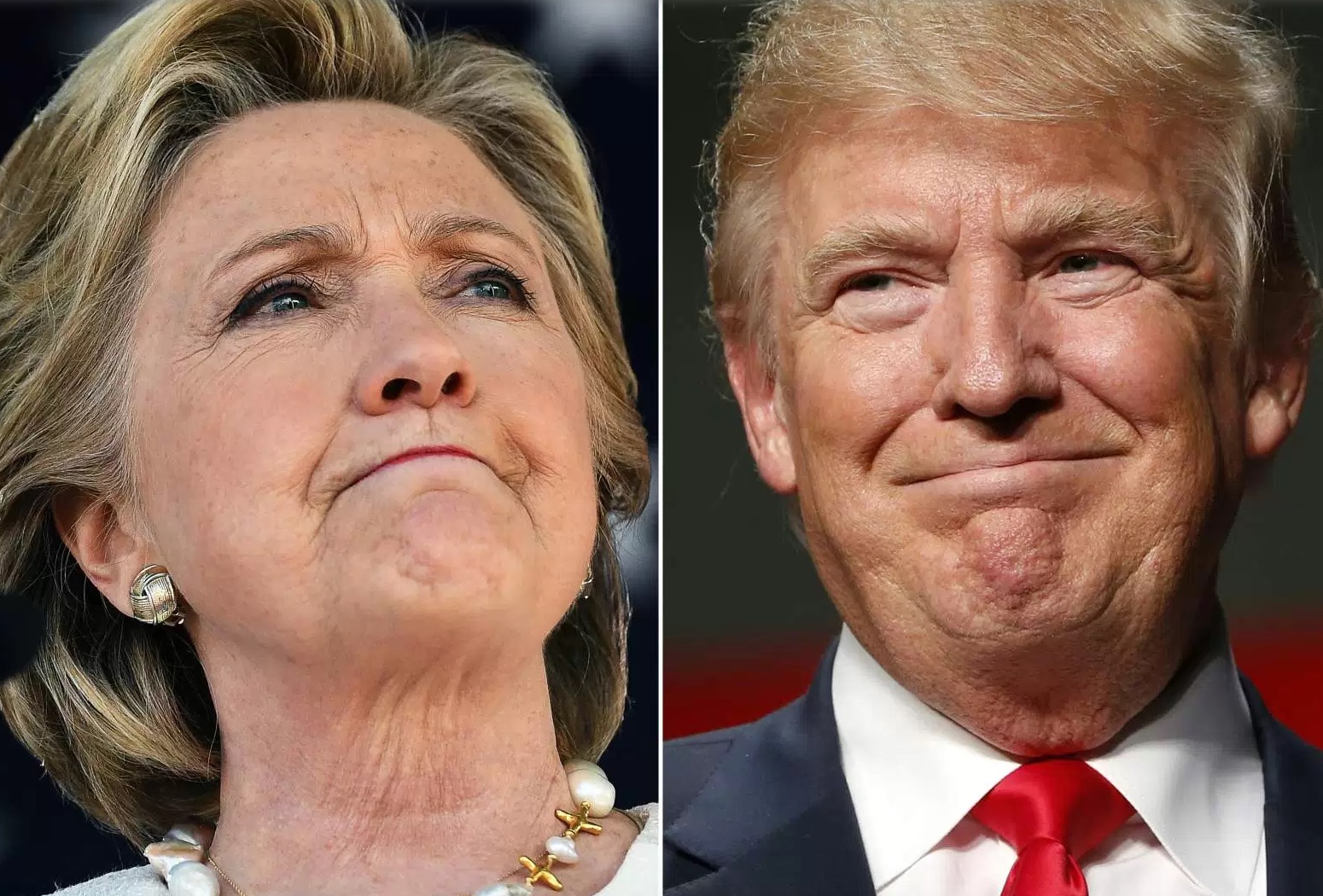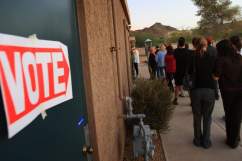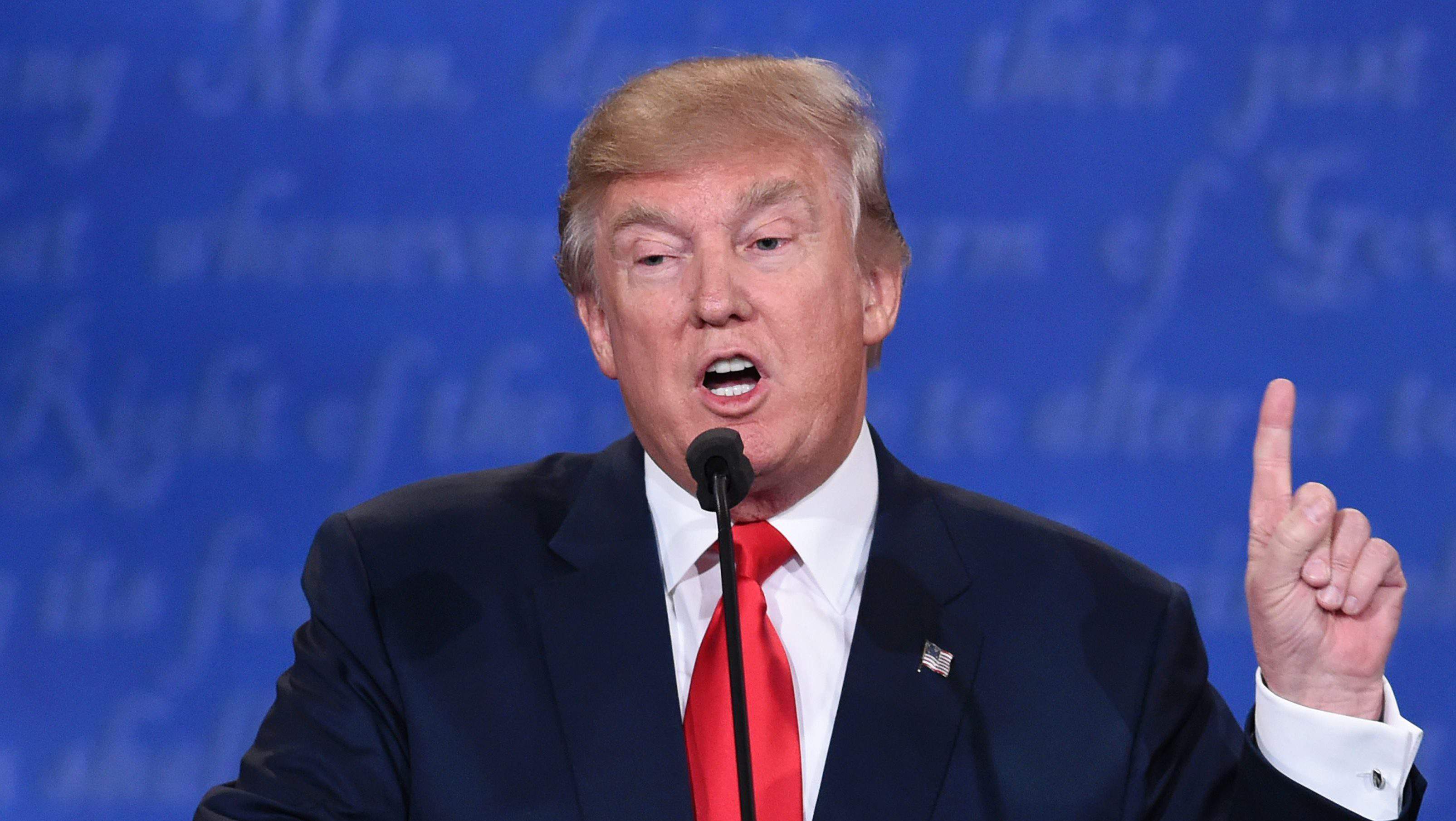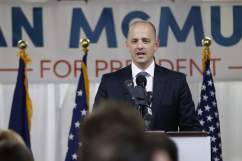
Which presidential candidate will win Florida this year?
Everyone’s creating electoral college maps, and a lot of them predict what’s most likely (that’s a Hillary Clinton victory based on the math). But let’s be honest: What’s been predictable about this election season?
We saw a brash businessman turned reality star turned politician seize the nomination of the Republican Party while running against it (a nomination which none of the pundits thought he would win). We saw the former First Lady kneecapped by a sudden letter from the FBI director, who announced he was going to investigate her emails again shortly before the election only to say Sunday: Never mind.
Nothing about this election has been typical, and both candidates have a plausible pathway to the presidency. We will start with the more conventional map to set the stage, and then we will look at 6 surprising – but still possible based on latest presidential polls – election outcomes.
Here’s the map showing a Clinton victory based on each candidate being given the states he or she is leading in the current battleground polling averages on the RealClearPolitics site. You can see how formidable the math is for Trump; he even wins Florida, but she still gets the White House (although New Hampshire is currently in the margin of error and a possible Trump pickup, which would flip the math here to a Trump win):
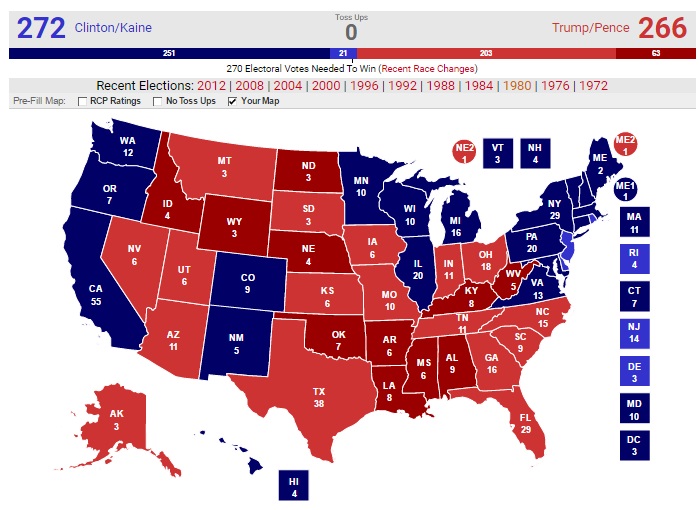
Plus, the map above gives him Florida, which he’s only leading in the polling averages by 0.2%. The electoral college represents a formidable task, which is why you’re now seeing Trump competing for traditionally blue states where he’s behind in the polls. He has to win everything that’s deadlocked to have a chance, and that’s a tough pathway.
Now 6 possible outcomes that could surprise. (Maps are courtesy of RealClear Politics.)
1. Trump Wins Pennsylvania
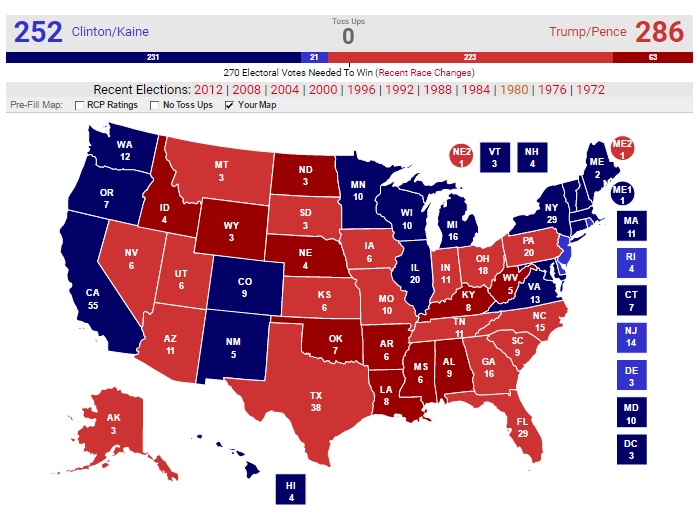
Trump has a chance in Pennsylvania. Clinton leads there, but her lead has been shrinking as Trump finds support in western Pennsylvania due to economic angst, labor issues, and rising Obamacare premiums (think Philly vs. Pittsburgh). Pennsylvania would go such a long way for Trump that it would give him a cushion. Look at the map above. He could afford to lose other deadlocked states if he wins Pennsylvania (like Nevada or a state like Iowa, where he leads but not by a lot).
Why would this be a surprise? Because Pennsylvania hasn’t gone for a Republican since 1988. However, the state has 20 electoral votes, making it quite a prize for someone who wants to redraw the map. Barack Obama won Pennsylvania 52% to 46.6%.
What do recent polls say? Clinton leads by a meager average of 1.9% in RealClearPolitics polling averages, an average that has steadily shrunk in the past week. The most recent poll by a Republican polling group found Trump leading by 1. Of the 5 other most recent polls, one showed the race a tie, two showed Clinton leading by 4, and two showed Clinton leading by 2.
How much has the gap closed? Clinton led by 10 on August 28 in the polling averages. She led by 8.4 on October 14. She led by 5.2 on October 29.
Yes, this would be a surprise – a big upset. But it’s possible.
You can read more about Pennsylvania and the election here:
Read more about it in Spanish in AhoraMismo.com
2. Clinton Wins Arizona
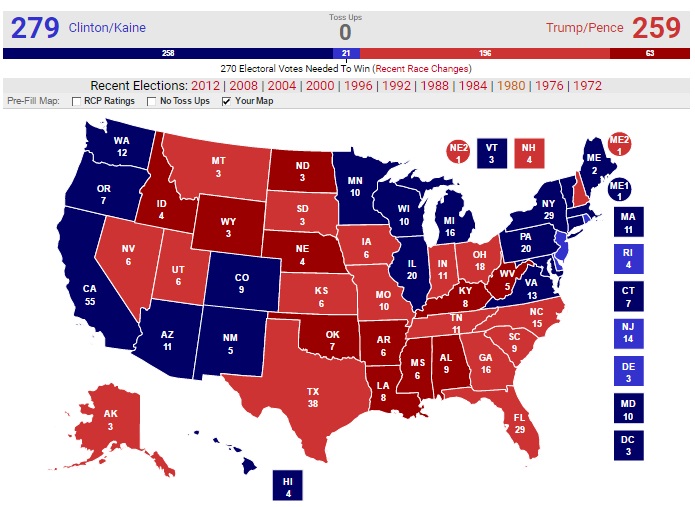
Why would this be surprising? It would be surprising because Arizona has only gone for a Democrat one time since 1948 (Harry Truman won the state in 1948). That Democrat? Bill Clinton in 1996, and that margin was close. Moderates and independents gave Clinton Arizona, and GOP officials there said he embraced some of their themes to win.
Notice that the map above gives Trump Florida (no sure thing) just to demonstrate the power of a Clinton win in Arizona. She could lose other important battlegrounds, like North Carolina, New Hampshire, and Ohio, if she wins Arizona.
What evidence is there to even think this is remotely plausible? Polls. And demographics. Trump currently leads Arizona by 4% in RealClearPolitics polling averages, but Clinton was ahead (slightly) in the polling averages as recently as October 31. She’s never led in polling averages in Arizona by more than 1.5%, though, demonstrating that if she does win Arizona, it would likely be a squeaker.
Giving Clinton hope: Latino turnout is up, and Democrats said early voting numbers showed they were ahead of their 2012 pace.
Hispanic turnout in early voting had doubled. Learn more about that here:
\
Read more about Donald Trump’s odds of winning in Spanish at AhoraMismo.com:
3. Trump Wins Minnesota
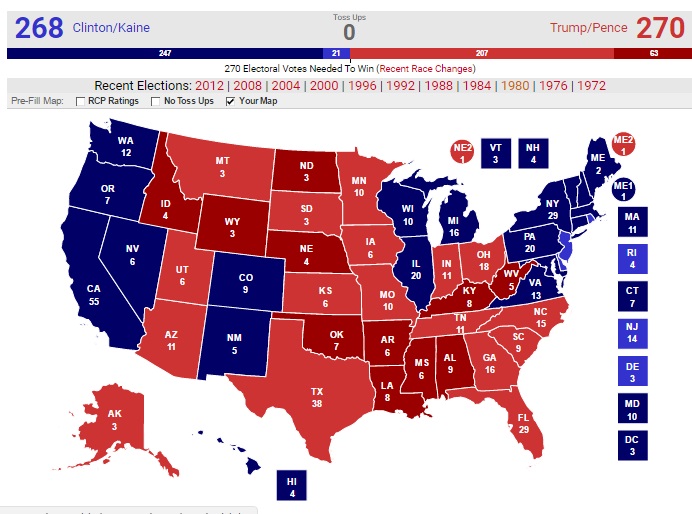
Is Minnesota really in play? Trump seems to think it is; after all, he jetted to the state to give a speech in an airport hangar, using valuable time in the run up to the election. He was met by thousands. A Minnesota win for Trump would be surprising because the last time the state voted for a Republican for president was 1972. To put that in context, Melania Trump was born in 1970.
Here’s what a Minnesota win would do for Trump: It would allow him to lose other deadlocked battlegrounds, like Nevada (where a local TV reporter analyzing early voting returns says they predict a Clinton win.) This map is still predicated on Trump winning Florida, though (almost all electoral college maps predicting a victory for him require him to secure Florida).

The polls contradict him. Clinton leads by 11 and 8 in the most recent Minnesota polling in the RealClearPolitics database. However, the polling is dated. It was conducted largely before James Comey’s first letter to Congress and the federal government’s news that Obamacare premiums were going up in Minnesota by 59%.
There hasn’t been a lot of recent non-online polling out of Minnesota, Minnesota elected a reality star before as governor (Jesse “The Body” Ventura!), it was the site of a mall mass stabbing by an immigrant, the state is riven by Somali refugee tensions (which Trump highlighted in his speech), and it has the fourth highest Obamacare premium increase in the country (2% of the population is facing a massive increase without corresponding subsidies and tax credits, announced just October 24, leading even the Democratic governor to say it’s not affordable anymore).
The perfect storm?
However, FiveThirtyEight, which has analyzed all polling out of Minnesota, online or not, gives Trump only a 14.2% chance of winning the state. There was good news for Trump out of a poll in a Minnesota Congressional district that usually votes Democratic, though.
Read more about Minnesota and the presidential election here:
4. Clinton Wins Georgia
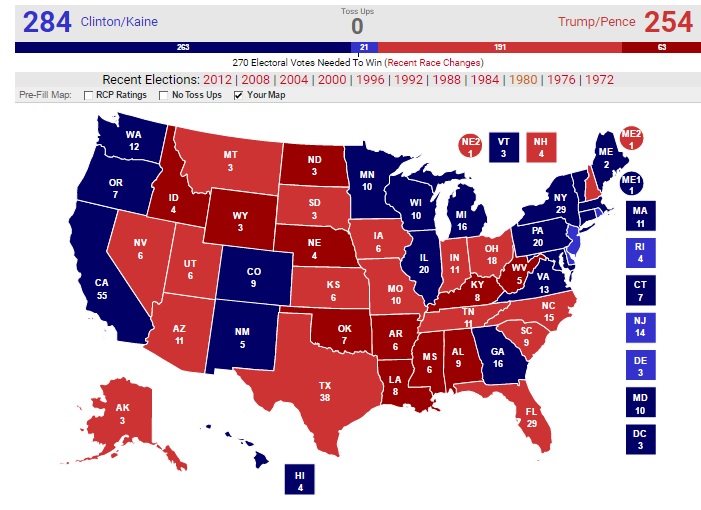
Clinton has kept Georgia in play, although Trump has broken into more of a lead there lately. The reason it’s in play? Almost one third of the state is African-American, and African-Americans vote more lopsidedly for Clinton than even Latino voters do. In one recent Georgia poll, 88% of African-American voters in Georgia selected Clinton (However, Obama received 93 percent of the black vote nationally.)
Georgia would allow Clinton to weather losing some really big states, like Florida, North Carolina, AND Ohio. Indeed, it allows her to basically lose all other deadlocked states and still win the White House. One pick up, and it’s game over.
According to Slate, Georgia’s changing demographics have helped put the state in play for Clinton. The white percentage of the population has declined from 63 percent in 2000 to 54 percent today, whereas black, Latino and Asian populations have all increased, Slate said.
The key for Clinton here is turnout. Independents were breaking Trump’s way in recent polling, making this a tough pick up for Clinton. But a possible one. Georgia would allow her to redraw the map and weather losing a string of other deadlocked battleground states.
5. Trump Wins New Mexico
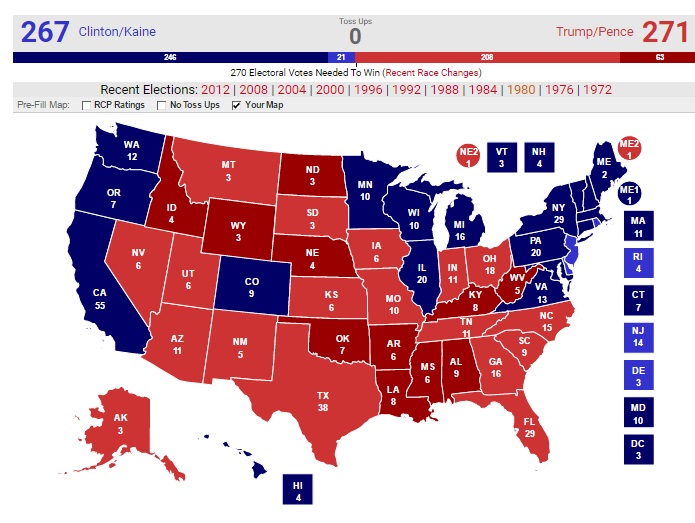
New Mexico, you say? Yes, that would be a surprise. It hasn’t even factored into most battleground discussions anymore because it seemed solidly for Hillary.
New Mexico would be an insurance policy, allowing Trump to lose another battleground state, like New Hampshire. New Mexico last voted for a Republican in 2004 (George W. Bush).
Thus, a victory by Trump in New Mexico would be a surprise. Why is it even possible, though? The polls have shown Clinton with a lead, but it’s closer than Mitt Romney ran against Obama in New Mexico, said National Review. However, early voting in New Mexico has also picked up a surge in Hispanic turnout, which bodes well for Clinton.
There hasn’t been a lot of polling out of New Mexico, which always increases the chances of polling error. Clinton led by only 2 percentage points in a poll announced November 6. That’s in the margin of error. The poll found that more Democrats were crossing over to vote for Trump than Republicans were crossing over to vote for Hillary (this would be a shift not detectable in early voting returns that just report partisan affiliation, if that).
The RealClearPolitics polling average has Clinton up 5 percentage points in the state. She was up by 5 and 8 in two other slightly older polls. The race is now on the RealClearPolitics battleground list, replacing Georgia there.
6. McMullin Wins Utah

The chances of independent candidate Evan McMullin pulling off a victory in Utah have been diminishing recently, but he’s from Utah, he’s a Mormon, and Mitt Romney’s home has never warmed up to the New York entrepreneur hammered with sexual assault allegations. Some polls were picking up support for McMullin, although voters weren’t asked about him by all pollsters.
A Utah win for McMullin would devastate Trump’s chances. Is it likely? Well, no. But it’s possible. Hence, it would be a surprise. After all, Utah has voted Republican for 52 years, but some conservatives think McMullin is the only conservative in the race. The Weekly Standard says Trump now leads between 5-10 percentage points in Utah polls.
Read more about McMullin’s chances in Utah here:

